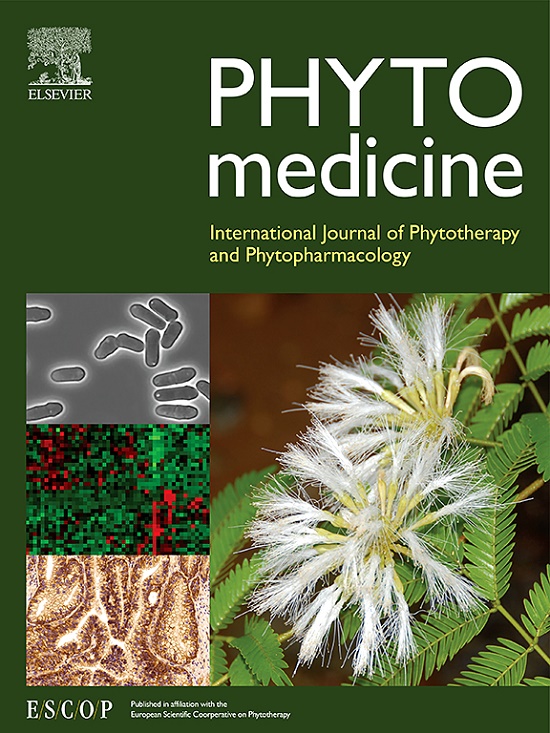The inhibitory effect of Astragalus flavone extract on hyperuricemia and its underlying molecular mechanism by targeting JNK/AP-1/NLRP3/IL-1β signaling pathway
IF 6.7
1区 医学
Q1 CHEMISTRY, MEDICINAL
引用次数: 0
Abstract
Background
Hyperuricemia (HUA) is a metabolic disease disturbing human health caused by the overproduction or underexcretion of uric acid (UA). Astragalus is the root of Astragalus membranaceus (Fisch.) Bunge, has notable regulatory effect on chronic nephritis, proteinuria and spontaneous sweating, suggesting it could be a potential anti-HUA agent. However, limited research has been conducted on its anti-HUA effect and mechanism.
Methods
The present study performed untargeted and plasma metabolomics of Astragalus extract to identify the main constituents that can be absorbed and exert effect in mice, and further investigated the underlying mechanism by enzyme activity assay, Western Blotting and molecular docking.
Results
The results showed that Astragalus flavone extract inhibited UA synthesis by binding to XOD to hinder substrate binding and inhibiting xanthine oxidase (XOD) protein expression, inhibited JNK/AP-1/NLRP3/IL-1β signaling pathway to alleviate prolonged HUA-induced inflammation and abnormal UA metabolism, and protected the kidney by reducing serum renal function index and improving renal tissue atrophy, fibrosis and tubular dilatation both in vitro and in vivo. Besides, glycitein and isoformononet were identified as the main flavones in Astragalus extract absorbed into the bloodstream of mice, isoformononetin was found to inhibit UA synthesis by direct binding to XOD, and glycitein was found to interact with c-Jun to facilitate UA excretion and inhibit inflammation.
Conclusion
This paper represents the pioneering investigation that firstly identifying two flavonoids of Astragalus extract that can be absorbed to fight against HUA, and elucidating their diverse molecular mechanism by targeting JNK/AP-1/NLRP3/IL-1β signaling pathway, UA metabolism and kidney protection.

求助全文
约1分钟内获得全文
求助全文
来源期刊

Phytomedicine
医学-药学
CiteScore
10.30
自引率
5.10%
发文量
670
审稿时长
91 days
期刊介绍:
Phytomedicine is a therapy-oriented journal that publishes innovative studies on the efficacy, safety, quality, and mechanisms of action of specified plant extracts, phytopharmaceuticals, and their isolated constituents. This includes clinical, pharmacological, pharmacokinetic, and toxicological studies of herbal medicinal products, preparations, and purified compounds with defined and consistent quality, ensuring reproducible pharmacological activity. Founded in 1994, Phytomedicine aims to focus and stimulate research in this field and establish internationally accepted scientific standards for pharmacological studies, proof of clinical efficacy, and safety of phytomedicines.
 求助内容:
求助内容: 应助结果提醒方式:
应助结果提醒方式:


